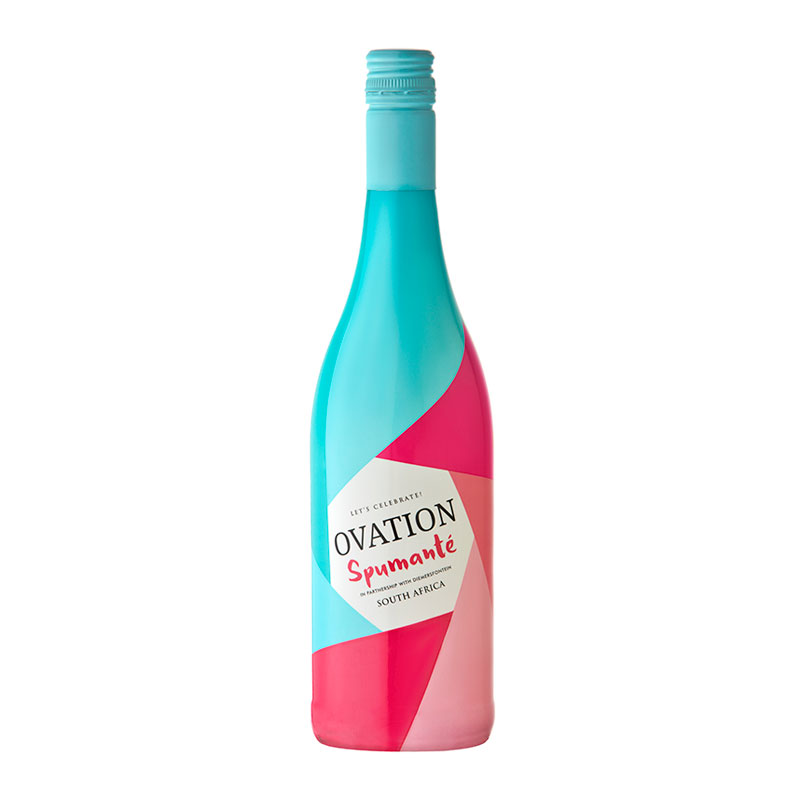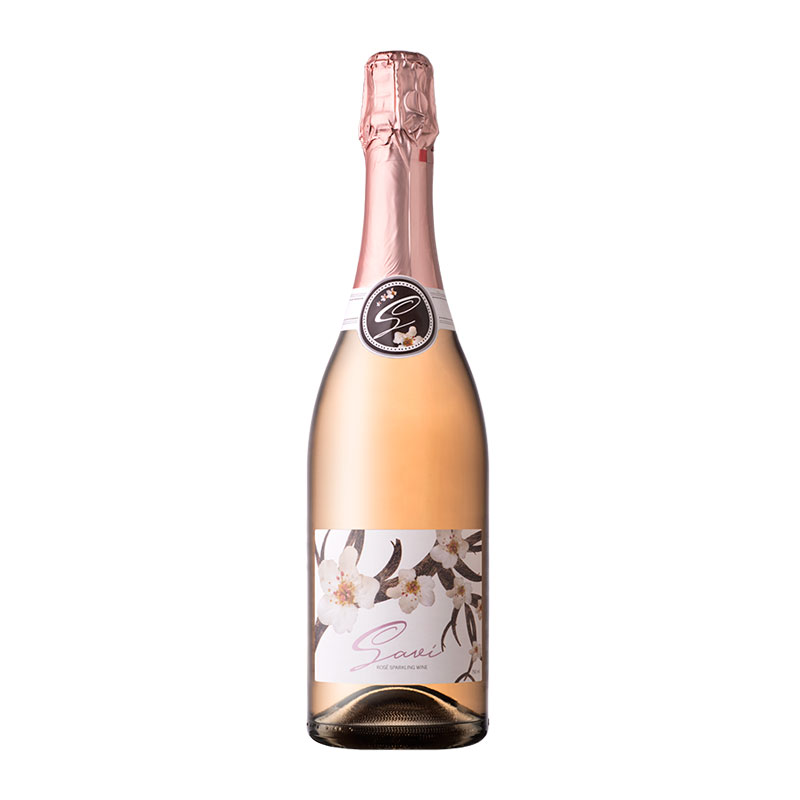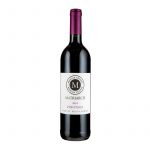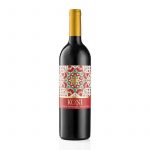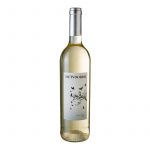Introduction to the History of Wine
Wine, a fermented alcoholic beverage made from grapes, has held a significant place in human culture for thousands of years. It is produced through the process of fermenting crushed grapes with yeast, which converts the sugars into alcohol. Wine is known for its diverse flavors, aromas, and complexities, making it a beloved beverage enjoyed by people around the world.
The significance of wine extends beyond its role as a beverage. Throughout history, wine has played a central role in various cultural, social, and religious contexts. It has been associated with celebrations, religious rituals, social gatherings, and even medicinal uses. Wine has been a symbol of wealth, power, and refinement, and its production and consumption have shaped societies and economies throughout time.
In this exploration of the history of wine, we will journey through time to uncover its fascinating origins, evolution, and cultural impact. From ancient times to modern trends, we will delve into the stories behind winemaking techniques, the influence of wine on art and literature, the rise of wine regions, and the ever-changing consumer preferences.
This journey will take us through ancient civilizations such as Mesopotamia, Egypt, Greece, and Rome, where wine played a pivotal role in their cultural, social, and religious practices. We will then examine the medieval period in Europe, where wine became intertwined with the Catholic Church and feudal society. The Renaissance period will showcase the birth of modern winemaking techniques and the impact of wine on art and literature. We will also explore the expansion of wine production in the New World and the challenges faced during the industrial age.
Moving into the modern era, we will witness the globalization of wine, the emergence of new winemaking regions, and the evolving preferences of consumers. We will delve into emerging trends such as climate change’s impact on vineyards, the rise of sustainable winemaking practices, and the integration of technology in wine production and marketing.
The purpose of this article is to provide a comprehensive exploration of the history of wine, highlighting its cultural, social, and economic significance throughout time. By understanding the origins and evolution of wine, we can gain insights into the human experience, the development of civilizations, and the interconnectedness of cultures through the lens of this beloved beverage.
This content aims to engage readers by presenting captivating historical narratives, intriguing anecdotes, and notable milestones in the wine industry. By examining the past, we can also shed light on the present and the future of wine, considering emerging trends, changing consumer preferences, and the challenges and opportunities facing the industry.
Whether you are a wine enthusiast, a history buff, or simply curious about the rich tapestry of human civilization, this exploration of the fascinating history of wine promises to captivate, inform, and inspire.

Ancient Origins of Wine
Early Evidence of Wine Production The roots of winemaking can be traced back to ancient times, with early evidence of wine production dating back thousands of years. Archaeological discoveries have revealed ancient pottery vessels, grape seeds, and residue that provide insight into the early stages of winemaking. One notable discovery is the 8,000-year-old pottery jars found in Georgia, which contained chemical evidence of wine production, making it one of the earliest known instances of winemaking in human history.
The Role of Wine in Ancient Civilizations
Mesopotamia and the Birth of Winemaking Mesopotamia, located in the fertile region of the Tigris and Euphrates rivers, played a crucial role in the development of winemaking. The ancient Sumerians, who inhabited this region around 4,000 BCE, recognized the agricultural potential of grapes and began cultivating vineyards. They developed techniques for harvesting, fermenting, and storing wine, using clay vessels called amphorae. Wine held a prominent place in their society, with records indicating its use in religious rituals, as an offering to gods, and in social gatherings.
Egypt and Wine as a Symbol of Prestige In ancient Egypt, wine held great significance and was associated with royalty and the elite. The Egyptians cultivated vineyards along the Nile River, and their wines were highly prized. Wine was often used in religious ceremonies, funerals, and celebrations. The rulers of Egypt, including pharaohs, nobles, and priests, consumed wine as a symbol of their wealth and power. The elaborate tombs of pharaohs even depicted scenes of wine production, further emphasizing its importance in their culture.
Greece and Wine in Mythology and Culture Wine occupied a central position in ancient Greek mythology, literature, and everyday life. The Greeks celebrated wine as a divine gift from the god Dionysus, associating it with pleasure, festivities, and artistic inspiration. They developed sophisticated winemaking techniques and introduced the use of wooden barrels for aging and storing wine. Wine played a pivotal role in Greek symposia, lively gatherings where philosophical discussions, music, and poetry were accompanied by drinking wine. Greek city-states like Athens and Sparta had their own distinct wine traditions and regulations.
Rome and the Spread of Viticulture
The Romans expanded upon the knowledge and practices of the Greeks, spreading viticulture throughout their vast empire. Wine became an integral part of Roman society and was consumed widely by all social classes. The Romans improved vineyard management techniques, introduced new grape varieties, and developed advanced winemaking methods. They recognized the economic potential of wine production and established large-scale vineyards in various regions, including Italy, Gaul (present-day France), and Hispania (present-day Spain). Wine was not only a popular beverage but also an essential component of Roman religious ceremonies and feasts.
The ancient origins of wine in Mesopotamia, Egypt, Greece, and Rome laid the foundation for winemaking practices that have been passed down through the ages. These civilizations recognized the cultural, social, and economic value of wine, shaping its symbolism, traditions, and production techniques. The legacy of their contributions can still be seen in the winemaking processes and the cultural significance of wine in the modern era.

The History of Wine during the Middle Ages
Influence of the Catholic Church
During the Middle Ages, the Catholic Church held significant influence over society, and wine played a central role in religious rituals. Wine was used in the celebration of the Eucharist, where it was believed to be transformed into the blood of Christ. As a result, the Church became a major producer and consumer of wine. Monasteries and abbeys owned extensive vineyards and practiced winemaking as part of their religious duties.
Monastic Winemaking Traditions
Monastic orders, such as the Benedictines and Cistercians, played a crucial role in preserving and advancing winemaking knowledge during the medieval period. Monks dedicated themselves to cultivating vineyards, perfecting winemaking techniques, and studying the medicinal properties of wine. They carefully documented their methods and shared their knowledge with other winemakers. Monastic winemaking traditions not only ensured the production of quality wines but also contributed to the advancement of viticulture and oenology.
The History of Wine in Feudal Society
Importance of Wine for Trade and Commerce
Wine production and trade were vital components of medieval European economies. Wine became a valuable commodity, and regions with favorable climates and suitable vineyard sites thrived economically. Vineyards were established near major trade routes, and wine merchants played a significant role in commercial exchanges. Wine trade networks spanned across regions, connecting producers, merchants, and consumers. Wine was transported in barrels and sold in markets, fairs, and taverns, contributing to the growth of medieval cities.
Wine as a Social Status Symbol
In feudal society, wine consumption became a symbol of wealth, status, and refinement. It was primarily enjoyed by the nobility and upper classes, who could afford the luxury of fine wines. Feudal lords and rulers hosted lavish banquets and feasts where wine flowed abundantly, demonstrating their wealth and power. Wine consumption was associated with social gatherings, courtly rituals, and celebrations. The quality and rarity of wines served at such events became a means of displaying one’s social standing and sophistication.
Wine’s association with the Catholic Church, combined with the monastic winemaking traditions, ensured the survival and cultivation of vineyards throughout the Middle Ages. The economic significance of the wine trade stimulated regional growth, while its consumption served as a marker of social status. These dynamics shaped medieval European society, fostering the development of winemaking techniques, trade networks, and a wine culture that continued to evolve in the centuries to come.

The History of Wine during the Renaissance period
Discoveries and Innovations in Winemaking Techniques
The Renaissance period witnessed significant advancements in winemaking techniques and the understanding of viticulture. Scholars and scientists, inspired by the revival of classical knowledge, began to experiment and document their findings. This led to the discovery of new grape varieties, improvements in vineyard management, and the refinement of winemaking practices. Innovations such as pruning methods, grafting techniques, and the use of glass bottles for aging and preserving wine contributed to the quality and consistency of wines produced during this period.
Influence of Wine on Art and Literature
Wine played a prominent role in Renaissance art, literature, and culture. Paintings and literary works of the time often depicted scenes of wine consumption, banquets, and vineyards. Artists such as Leonardo da Vinci and Titian included wine-related imagery in their masterpieces, reflecting the allure and symbolism associated with wine. Wine also found its way into poetry and literature, with references to its intoxicating effects, its role in social gatherings, and its ability to inspire creativity. The Renaissance period celebrated wine as a cultural and intellectual stimulant.

The History of Wine in the New World
Exploration and the Introduction of Wine to the Americas
The Age of Exploration in the 15th and 16th centuries opened up new horizons for wine production. European explorers, such as Christopher Columbus and later Spanish and Portuguese colonizers, brought grapevines and winemaking knowledge to the New World. Vineyards were established in regions such as Mexico, Peru, Chile, and Argentina, introducing winemaking to the American continents. The climate and soil conditions in these regions proved conducive to grape cultivation, leading to the production of unique wines with distinct flavors and characteristics.
Winemaking in North and South America In North America, European settlers, particularly the English, Dutch, and French, introduced winemaking to regions such as Virginia, New York, and California. Despite facing challenges related to climate, diseases, and vineyard establishment, winemaking gradually took root and evolved over time. In the 19th century, California’s wine industry began to flourish, with the introduction of European grape varieties and the influence of immigrant winemakers, notably those of Italian and German origin. Today, California is recognized as a premier wine region in the United States.
In South America, countries like Chile and Argentina became major players in the global wine market. These regions experienced waves of European immigration, particularly from Italy and Spain, bringing with them their winemaking traditions and expertise. Over time, South American wines gained international recognition for their quality and distinct characteristics, with Argentina becoming renowned for its Malbec and Chile for its Carmenere.
The Renaissance period marked a significant turning point in the history of wine. The exploration of the New World expanded the geographical reach of winemaking, while the Renaissance’s intellectual and artistic achievements influenced winemaking techniques and the perception of wine as a cultural symbol. These developments set the stage for the birth of modern wine, laying the foundation for the diverse and dynamic wine industry we see today.

The History of Wine in the Industrial Age
Advances in Winemaking Technology
The Industrial Age brought significant advancements in winemaking technology, revolutionizing the production process and shaping the modern wine industry. Innovations such as mechanical grape crushers, hydraulic presses, and temperature-controlled fermentation allowed for larger-scale production, increased efficiency, and improved quality control. These technological advancements enabled winemakers to better manage the extraction of flavors, control fermentation temperatures, and minimize oxidation. The introduction of glass bottles with standardized closures, such as corks, also improved wine preservation and aging.
The Impact of the Phylloxera Epidemic
One of the most devastating events in the history of wine was the phylloxera epidemic that struck Europe in the late 19th century. Phylloxera, a microscopic vineyard pest, attacked and destroyed the roots of grapevines, leading to the decline and death of vineyards across the continent. This epidemic had a profound impact on the wine industry, as vineyards in major wine-producing countries like France, Spain, and Italy were decimated. It led to the loss of numerous grape varieties and traditional vineyards.
To combat the phylloxera infestation, winemakers discovered that grafting European grapevines onto resistant American rootstocks could provide a solution. This method, known as rootstock grafting, allowed European vineyards to recover and replant with phylloxera-resistant rootstocks. However, the epidemic forever changed the landscape of European vineyards and prompted the replanting of many vineyards with different grape varieties, altering the traditional winemaking traditions and terroir of certain regions.
Rise of Wine Regions and Appellations
During the Industrial Age, the concept of wine regions and appellations gained prominence. As winemaking practices improved and vineyards recovered from phylloxera, regions across Europe and the New World began to establish and define their wine-producing areas. In Europe, countries like France, Italy, and Spain formalized their wine regions, designating specific geographical areas with unique characteristics and wine styles. This led to the creation of protected designations of origin (PDOs) and appellations, which ensured the quality and authenticity of wines from specific regions.
The establishment of wine regions and appellations provided consumers with a guarantee of origin, quality, and typicity. It also fostered a sense of terroir, acknowledging the influence of geography, climate, and soil on the character and quality of wines. In the New World, countries like the United States, Australia, and South Africa also began delineating wine regions and creating appellations, following the European model. This trend contributed to the diversification and specialization of the global wine industry.
The Industrial Age marked a transformative period for winemaking, characterized by technological advancements, the challenges of the phylloxera epidemic, and the establishment of wine regions and appellations. These developments shaped the modern wine industry, allowing for larger-scale production, the recovery and preservation of vineyards, and the recognition of specific regions for their unique wine characteristics. The impact of these changes continues to shape winemaking practices and consumer expectations today.

The History of Wine in the Modern Era
Globalization and the Spread of Wine Culture
The modern era has witnessed the globalization of wine, with the spread of wine culture across the globe. Advances in transportation and communication have facilitated the international trade of wines, allowing consumers to access a wide range of wines from different regions. Wine appreciation and consumption have become more prevalent in various countries, leading to the development of local wine cultures and the emergence of new wine markets. Wine festivals, tastings, and educational events have played a role in promoting wine appreciation and expanding its popularity worldwide.
Wine Production and Consumption Trends
Old World vs. New World Wines
The modern era has seen the distinction between Old World and New World wines. Old World wines refer to wines from traditional wine-producing regions in Europe, such as France, Italy, and Spain, while New World wines encompass wines from countries outside of Europe, such as the United States, Australia, and South Africa. These two categories represent different winemaking traditions, styles, and expressions. Old World wines are often associated with terroir-driven characteristics, elegance, and complexity, while New World wines are known for their fruit-forward flavors, varietal expressions, and winemaking innovations.
Organic, Biodynamic, and Natural Wine Movements
The modern era has witnessed a growing interest in sustainable and alternative winemaking practices. Winemakers are implementing sustainable farming techniques, such as organic and biodynamic viticulture, to minimize the use of chemicals and reduce environmental impact. Water conservation methods, renewable energy sources, and waste management strategies are being employed to create more sustainable winery operations. The goal is to produce wines that are not only of high quality but also produced in a manner that respects the environment, supports biodiversity, and preserves the long-term viability of vineyard ecosystems.
Wine Tourism and Experiential Wine Experiences
Wine tourism has become increasingly popular in the modern era, offering wine enthusiasts the opportunity to visit vineyards, wineries, and wine-producing regions. Wine regions around the world have developed infrastructure to accommodate tourists, including tasting rooms, vineyard tours, and accommodation options. Wine tourism provides visitors with immersive experiences, allowing them to learn about winemaking processes, explore vineyards, and engage in wine tastings. Experiential wine experiences also include food and wine pairings, wine education classes, and participation in harvest activities. Wine tourism has not only stimulated local economies but also deepened consumer appreciation and understanding of wines.
In the modern era, globalization has expanded the reach and availability of wines, fostering the development of diverse wine cultures around the world. Wine production and consumption trends have evolved, with distinctions between Old World and New World wines, and the emergence of sustainable winemaking movements. Wine tourism has provided opportunities for immersive experiences, allowing enthusiasts to explore wine regions and engage with the winemaking process. The modern era continues to shape the wine industry, driven by evolving consumer preferences, technological advancements, and a growing appreciation for the cultural and experiential aspects of wine.

Emerging Trends in Wine
Climate Change and its Impact on Vineyards
One of the most pressing challenges facing the wine industry today is the impact of climate change on vineyards. Rising temperatures, shifting weather patterns, and extreme weather events pose significant risks to grapevines and wine production. Vineyards are experiencing changes in grape ripening times, alterations in flavor profiles, and increased susceptibility to pests and diseases. Winemakers are adapting by adjusting vineyard management practices, exploring new grape varieties that are more resilient to heat and drought, and implementing irrigation strategies to conserve water. Climate change has prompted a reevaluation of traditional wine regions and led to the exploration of cooler climate areas for viticulture.
Sustainable and Eco-friendly Winemaking Practices
The awareness of environmental sustainability has led to an increased emphasis on eco-friendly winemaking practices. Winemakers are implementing sustainable farming techniques, such as organic and biodynamic viticulture, to minimize the use of chemicals and reduce environmental impact. Water conservation methods, renewable energy sources, and waste management strategies are being employed to create more sustainable winery operations. The goal is to produce wines that are not only of high quality but also produced in a manner that respects the environment, supports biodiversity, and preserves the long-term viability of vineyard ecosystems.
Wine and Technology: Innovations in Production and Marketing
Technology continues to shape the wine industry, bringing innovations in both production and marketing. In winemaking, technological advancements such as precision viticulture, data analytics, and remote sensing are helping winemakers monitor vineyard conditions, optimize grape quality, and improve overall efficiency. Automation and robotics are also being employed in various stages of the winemaking process, from grape harvesting to bottling. Additionally, technology is revolutionizing wine marketing and consumer engagement through e-commerce platforms, social media, and virtual tastings. Augmented reality, virtual reality, and artificial intelligence are enhancing the consumer experience and providing new ways for wine enthusiasts to explore and learn about wines.
These emerging trends in wine reflect the industry’s response to the evolving landscape of challenges and opportunities. Climate change necessitates adaptation and resilience in vineyard management, while sustainability practices contribute to environmental stewardship and consumer demands for eco-friendly products. Technological advancements empower winemakers to produce wines with greater precision and efficiency, while also enabling novel approaches to marketing and consumer engagement. The future of wine will continue to be shaped by these and other emerging trends, as the industry adapts to changing consumer preferences, environmental considerations, and technological advancements.

The history of wine is a captivating journey through time, culture, and human ingenuity. From its ancient origins in Mesopotamia, Egypt, Greece, and Rome, to its influence on medieval Europe, the Renaissance, and the modern era, wine has played a profound role in shaping human civilization. It has been intertwined with cultural, social, and religious practices, celebrated in art and literature, and influenced the development of regions and economies.
The history of wine is one of resilience, adaptation, and innovation. It has weathered challenges such as the phylloxera epidemic and embraced technological advancements throughout the ages. Wine has evolved alongside changing consumer preferences, globalized trade, and emerging trends. Today, the wine industry faces new challenges related to climate change, sustainability, and technological advancements. Yet, it continues to captivate wine enthusiasts worldwide with its diversity, complexity, and the stories it tells.
As we raise our glasses to the rich history of wine, let us toast to the vineyards, winemakers, and consumers who have contributed to its enduring legacy. May we continue to appreciate and explore the world of wine, recognizing its cultural, social, and economic significance, and savoring the pleasures it brings.
Cheers!




